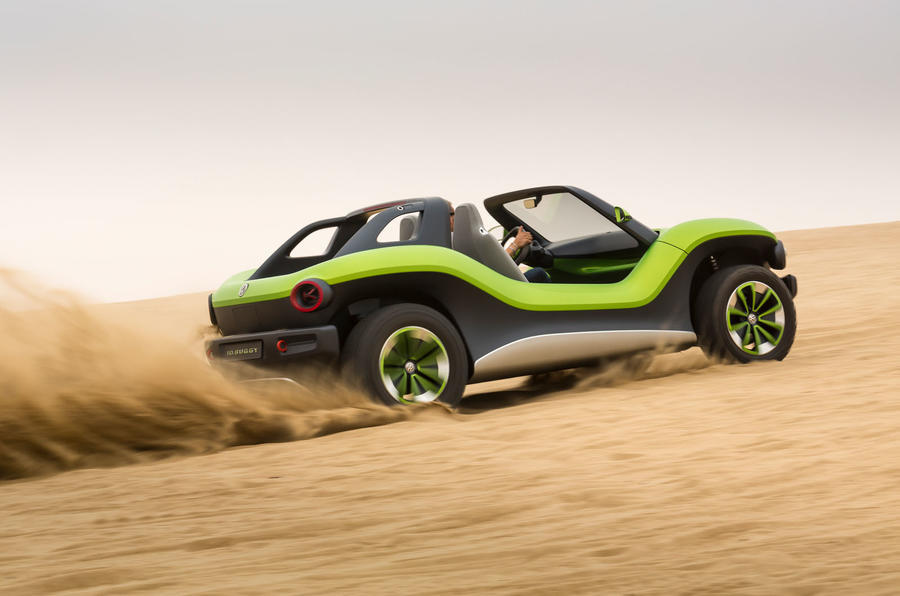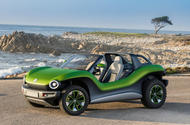Meyers Manx buggy has already inspired one electric revival
It looks like the original dune buggy is due a comeback.
A few more details about future models have started to filter out of Meyers Manx, the company founded in California by Bruce Meyers in 1964 and famous for making simple, Volkswagen-based, glassfibre-shelled, open-top off-roaders.
You might know the Manx buggy best from the 1968 film The Thomas Crown Affair but it competed in Baja rallies, too, and spawned dozens of similar buggies.
The basics were the same: the Volkswagen Beetle’s floorplan and running gear are largely flat and thus ripe for sticking a body on top of them.
Running the show as something of a passion, Meyers was still operating Meyers Manx in 2020 when, aged 94, he sold it to a company called Trousdale Ventures. Even then he stayed on as an ambassador until his death a year later.
Trousdale appointed Freeman Thomas as CEO. A native Californian automotive designer, he had spent time with Volkswagen, Porsche, Daimler-Chrysler and Ford. On his CV is the concept that became the new Volkswagen Beetle, the original Audi TT, a Jeep Willys concept and other cool things.
“I grew up on the beaches of Southern California. As I became an automotive designer, the philosophy of Bruce Meyers became a huge inspiration,” said Thomas at the time. He gets it, in other words.
You could still buy a glassfibre shell and kits from Meyers Manx in 2020. You can’t now, and companies can’t live on T-shirt sales alone (except T-shirt companies, obviously), which is where another of Trousdale’s companies, Coreshell Technologies, comes in.
Coreshell makes coatings for battery anodes and cathodes, the idea being to prevent batteries from corroding from within to improve both usable capacity and the life of the lithium ion cells that underpin modern electric cars.
Anyway, you can probably see where this is going: Coreshell technology in a battery pack underneath a new Meyers Manx dune buggy.

That’s not entirely unlike the 2019 Volkswagen ID Buggy concept, except that, as Thomas told US car magazine Autoweek earlier this year, the new Manx will be the same size as the original – which is a lot smaller than the Volkswagen.
Some cars really suit being EVs. Short-hop, fun weekend wagons that aren’t about on-the-limit road handling are among them. A beach buggy isn’t the sort of thing you will be covering hundreds of motorway miles in a week; it’s a hobbyist’s car. Jump in it fully charged, have a laugh in it, bring it home and plug it in again. I like the idea. We should see it next year.
Mind you, there’s probably something to be written about the gentrification of what were self-assembly cars. I can’t imagine a bunch of Californian teenagers putting an electric buggy together on a driveway like they might have cut open a Beetle so they could bolt an original Meyers Manx body on top.
But plenty of other beach buggies are still available – even if none of them nails the aesthetics quite as well as Meyers did. To somebody perennially looking at the next unfinished project, their appeal seems undimmed.
In other news
Last week, we wrote that the Healey by Caton costs £474,000 plus a donor Austin-Healey. It doesn’t. The price (including VAT) also gets you the donor car, and I’m happy to correct the record.
Source: Autocar
